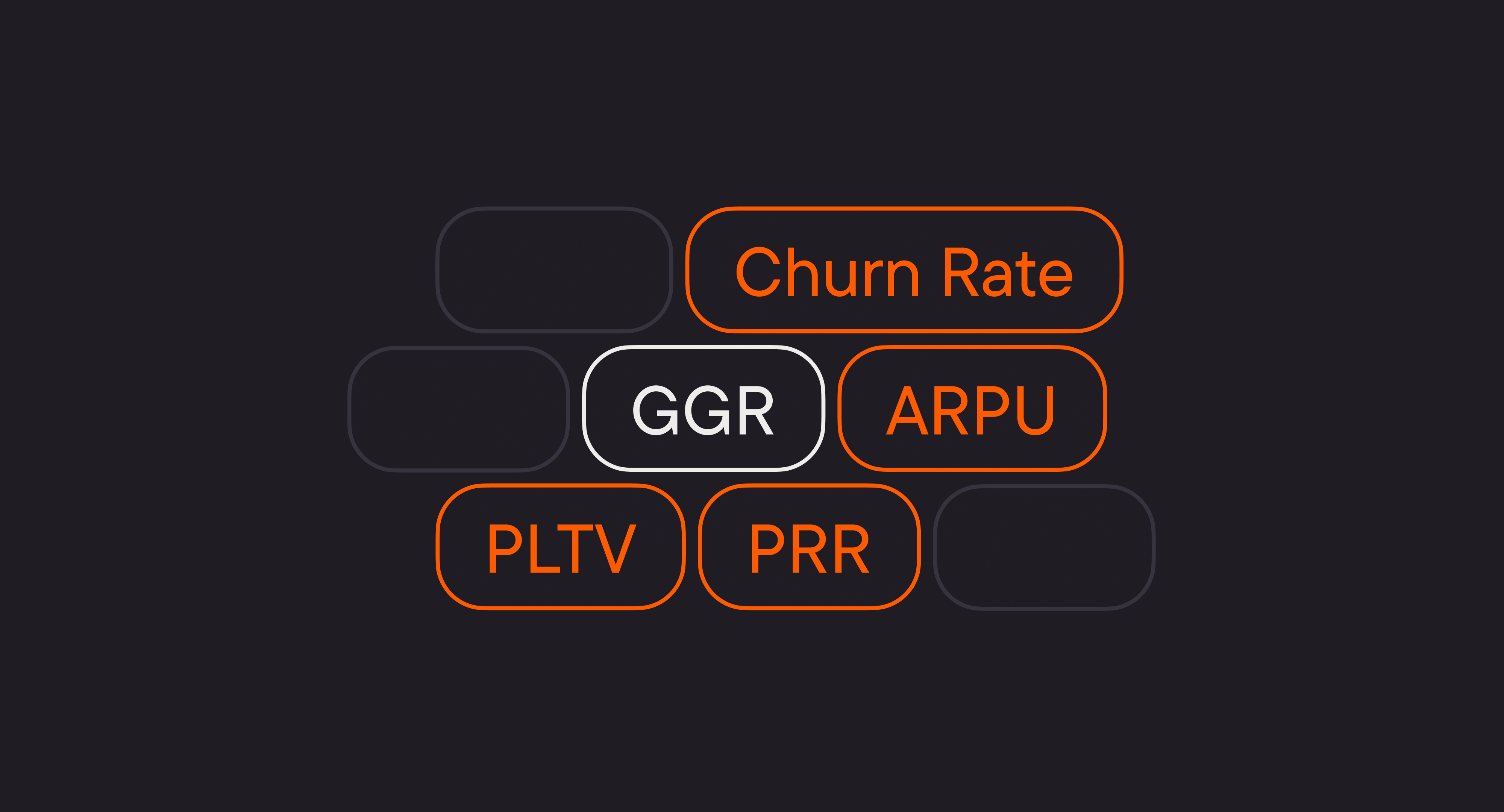The iGaming industry is in the midst of a transformation. With technological advancements, shifting regulations, and evolving player expectations, operators must adapt quickly to remain competitive.
Building a market-ready iGaming strategy isn’t just about having the right technology or offering a diverse portfolio of games. It’s about understanding the intricacies of the market, predicting future trends, and making data-driven decisions to ensure sustainable growth.
Know your players: personalization is key
Personalization has become the cornerstone of player engagement in the iGaming industry. Players today expect tailored experiences, and operators who fail to deliver risk losing customer loyalty.
- 60% of players prefer personalized gaming experiences. (Source: BettingUSA)
Personalizing the player journey doesn’t just involve offering individual promotions. It extends to game recommendations, bonuses, and user interfaces that adapt to the player's preferences. According to industry experts, personalized recommendations can increase player retention by up to 30%. This is where Blask play a pivotal role.
Blask's advanced analytics and AI-driven tools allow operators to gather deep insights into player behavior and preferences. With features like the Customer Profile, Blask enables operators to fine-tune their offerings in real-time, ensuring a unique and engaging player experience. These capabilities drive higher player satisfaction and, ultimately, better retention rates.
The key mistake?
Assuming the market remains static. Player behavior and market volume can shift due to emerging trends, new games, or even external factors like economic conditions or sports events.
Harness technology: AI & blockchain for competitive advantage
Technology has transformed iGaming, and the most successful operators leverage AI and blockchain to gain a competitive edge.
- 83% of iGaming operators report improved customer engagement through AI-driven personalization.
By using predictive analytics, AI can help operators forecast player behavior, identify churn risks, and provide tailored recommendations.
Blask’s AI-powered analytics are designed to help iGaming companies make data-driven decisions. By analyzing historical player behavior and market trends in real-time, Blask enables operators to create smarter marketing campaigns and more effective retention strategies.
Blockchain technology, too, is making waves in the sector by enabling more secure and transparent transactions. As cryptocurrencies like Bitcoin and Ethereum continue to gain traction, operators must explore the potential of crypto payments, particularly in markets where digital currencies are gaining regulatory acceptance.
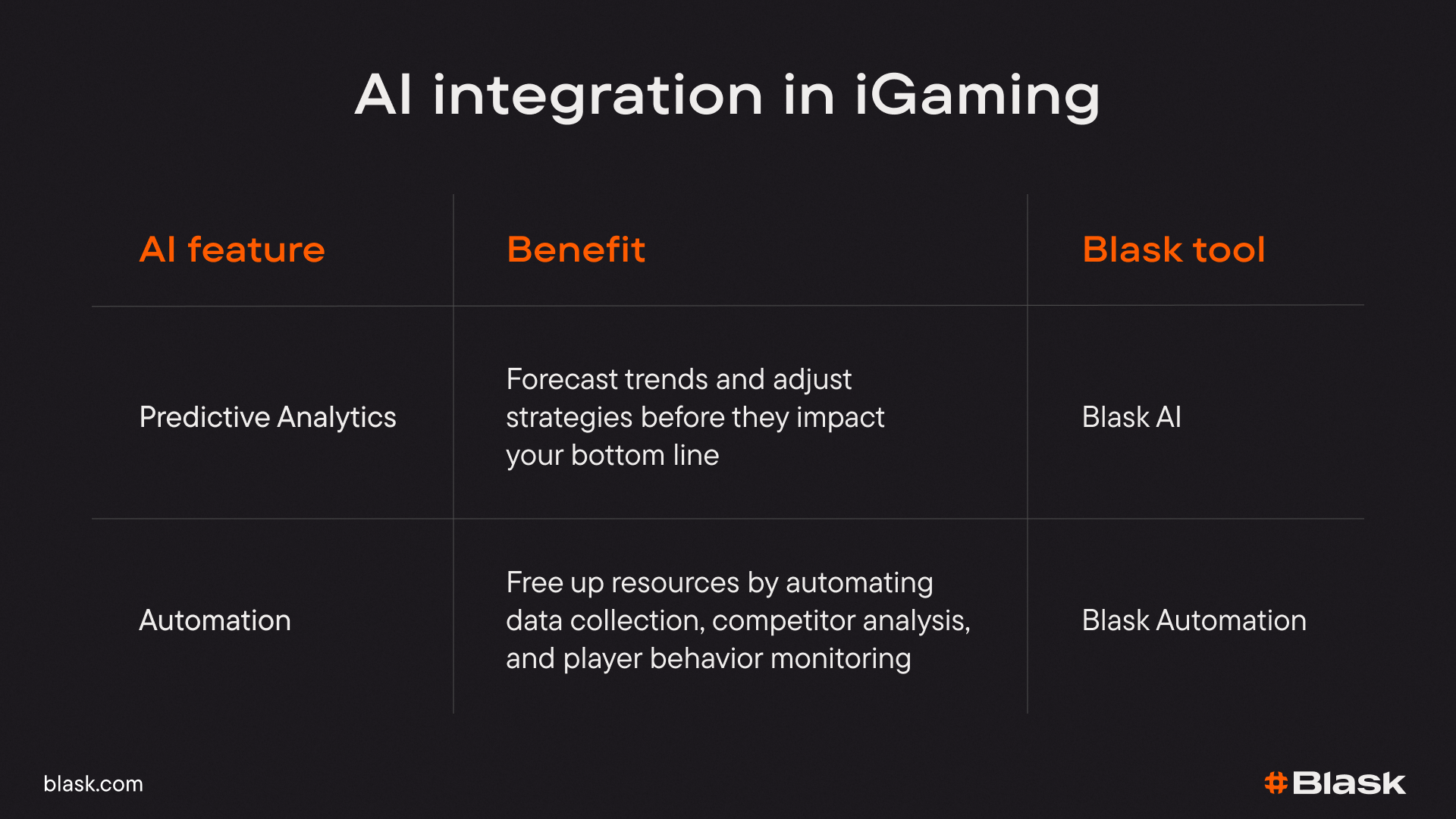
Ensure regulatory compliance
With iGaming regulations tightening globally, compliance is now a top priority for operators. From stricter licensing requirements to more robust player protection laws, navigating this landscape can be complex.
In regions like Europe, where regulatory frameworks such as the UK Gambling Commission and Malta Gaming Authority dominate, ensuring compliance is critical for market access. Operators must stay ahead of potential regulatory changes and be prepared to adapt their strategies accordingly.
Optimize for mobile & multi-device play
Mobile gaming continues to dominate the iGaming industry.
A report from Newzoo found that nearly 50% of global gaming revenue in 2023 came from mobile platforms, with a significant portion from mobile casino games. For operators, this means creating a seamless cross-platform experience is essential.
As more players move to mobile, ensuring that your platform is optimized for smaller screens, responsive design, and quick loading times is key to capturing this growing market segment.
Innovate to differentiate: tapping into emerging trends
Operators must continually explore new game formats, payment methods, and emerging technologies to stay relevant.
Trends like crash games, instant-win formats, and eSports betting have seen significant growth, offering exciting opportunities for differentiation.
Staying ahead of emerging trends and continuously innovating will keep your brand fresh and attract new players.
- Crash games and instant-win formats have seen a 200% growth in player engagement over the past two years.
- eSports betting is projected to generate $13 billion in revenue by 2025, up from $1.5 billion in 2020.
Market insights comparison: understanding key metrics
Effective market strategy relies heavily on understanding both macro and micro-level market insights. Operators must not only analyze their own performance but also track industry trends to identify areas of opportunity.
A comparative approach — benchmarking key metrics against industry averages—helps operators assess how they stack up against competitors.
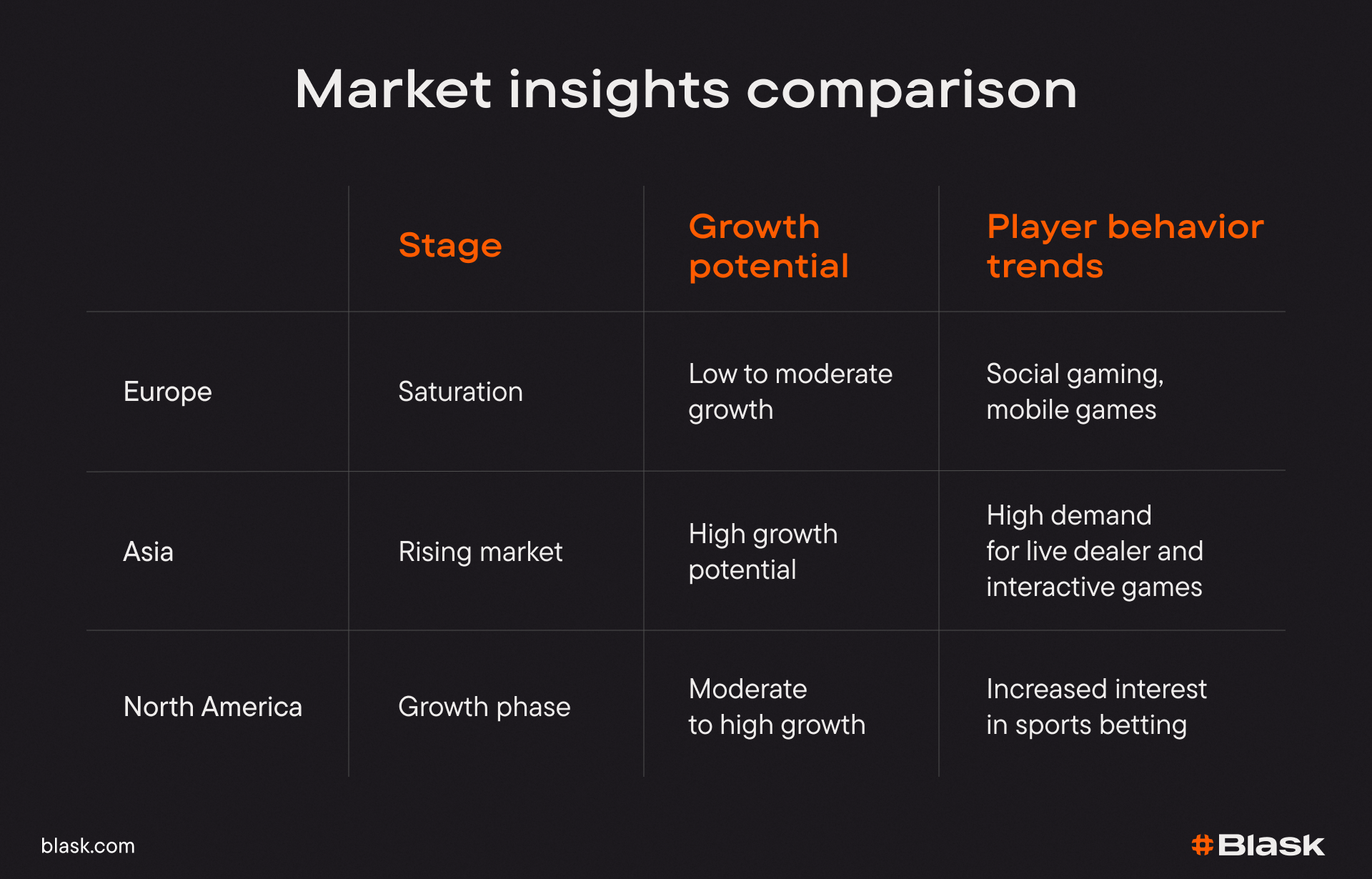
Blask enables hourly tracking of nearest competitors and their metrics, while Blask Index combined with Relative Market Share functionality helps monitor market changes and emerging trends with precision.
Through granular data collection at one-hour intervals, operators can identify shifts in competitive positioning and market dynamics as they happen in real-time.
The Acquisition Power Score (APS) metric provides insights into competitor acquisition performance and helps benchmark first-time deposit effectiveness against market leaders.
Meanwhile, Competitive Earning Baseline (CEB) tracking allows for direct revenue performance comparisons with competitors to optimize monetization strategies.
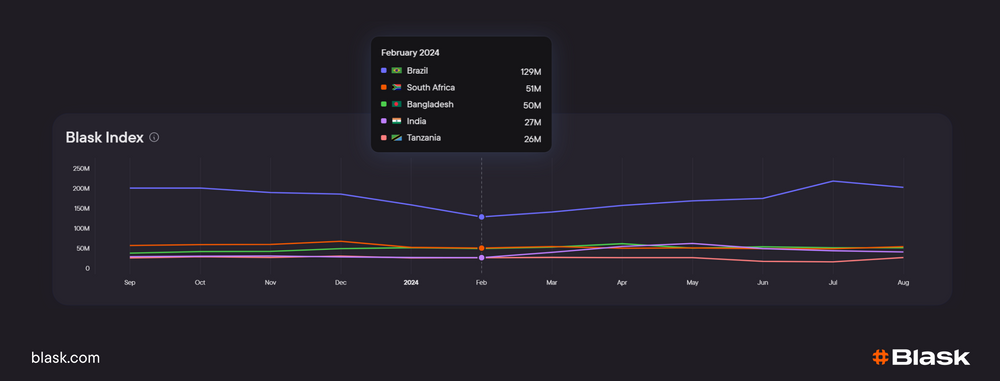
Competitor benchmarking: identifying gaps and opportunities
Knowing your competitors inside and out is essential for carving out a unique position. Benchmarking involves analyzing competitors' strengths, weaknesses, and strategies to uncover market gaps or areas where you can outperform them.
By monitoring competitor performance—whether it’s through their bonus structures, player retention rates, or game libraries—operators can identify industry best practices and areas where they can outshine the competition.
Benchmarking can help optimize user acquisition strategies, improve retention programs, and fine-tune product offerings to better align with market demands.
Best practices for benchmarking:
- Relative Market Share:
Visualize your market standing compared to direct competitors using Blask’s Relative Market Share graph.
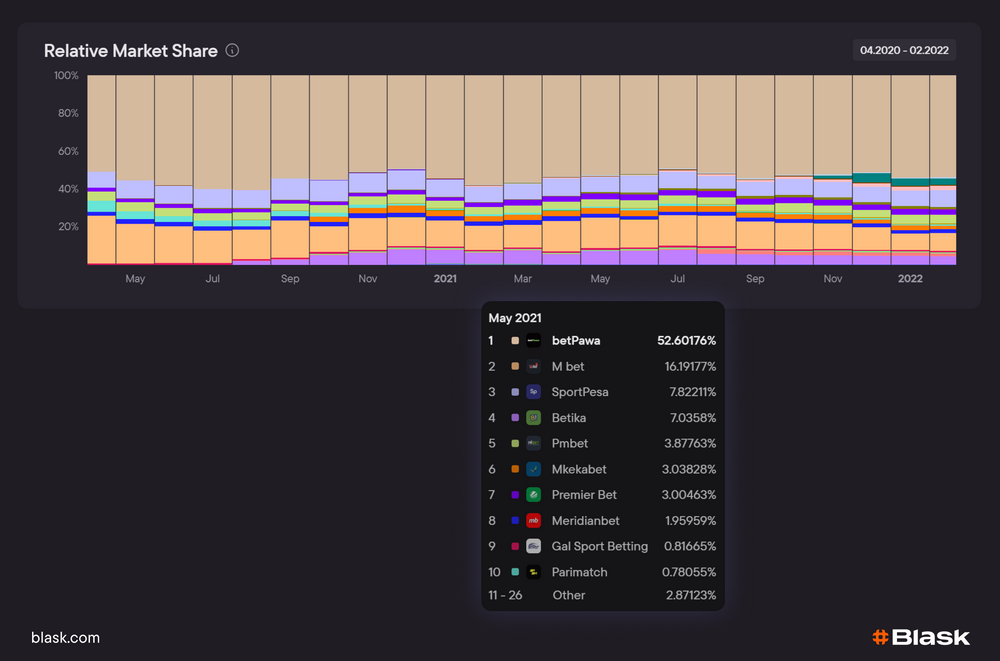
- Competitor analysis:
Focus on specific competitors to understand their strengths, weaknesses, and where they might outperform you.
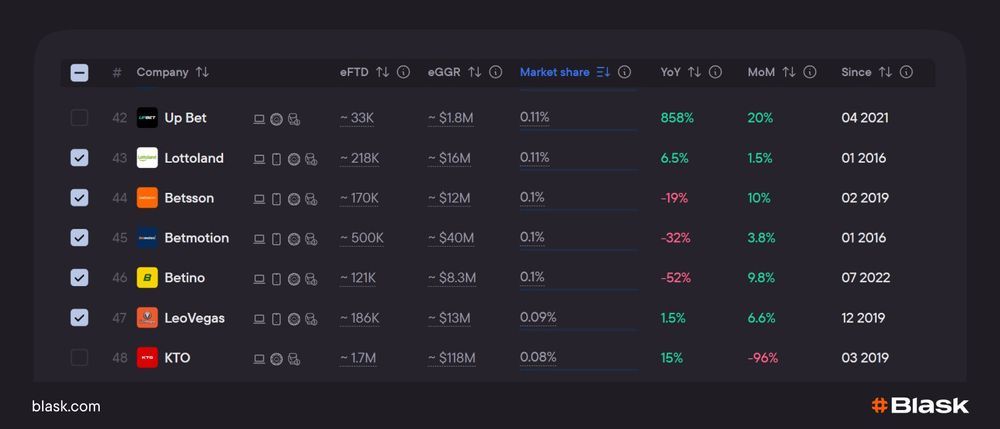
Market expansion: targeting new growth regions
Expanding into new markets is a major driver of growth in iGaming. With the global reach of the internet and growing regulation in various regions, operators have more opportunities than ever before to tap into international markets.
However, expanding into new territories requires a deep understanding of regional player preferences, regulatory conditions, and competitive dynamics.
Market expansion requires comprehensive research on regional trends, regulatory requirements, and local competitors. For example, markets like Asia and Latin America have shown rapid growth in recent years, driven by increasing smartphone penetration and demand for mobile-first gaming experiences. Identifying emerging markets early can help operators position themselves as market leaders and capture a loyal player base before competition intensifies.
Operators must also stay on top of regulatory changes in these new markets, as many countries
Market expansion tips:
- Geographical expansion:
Use Blask’s market comparison tools to assess the best regions for growth. - Seasonal opportunities:
Capitalize on spikes in player activity during major events like the World Cup or Super Bowl.
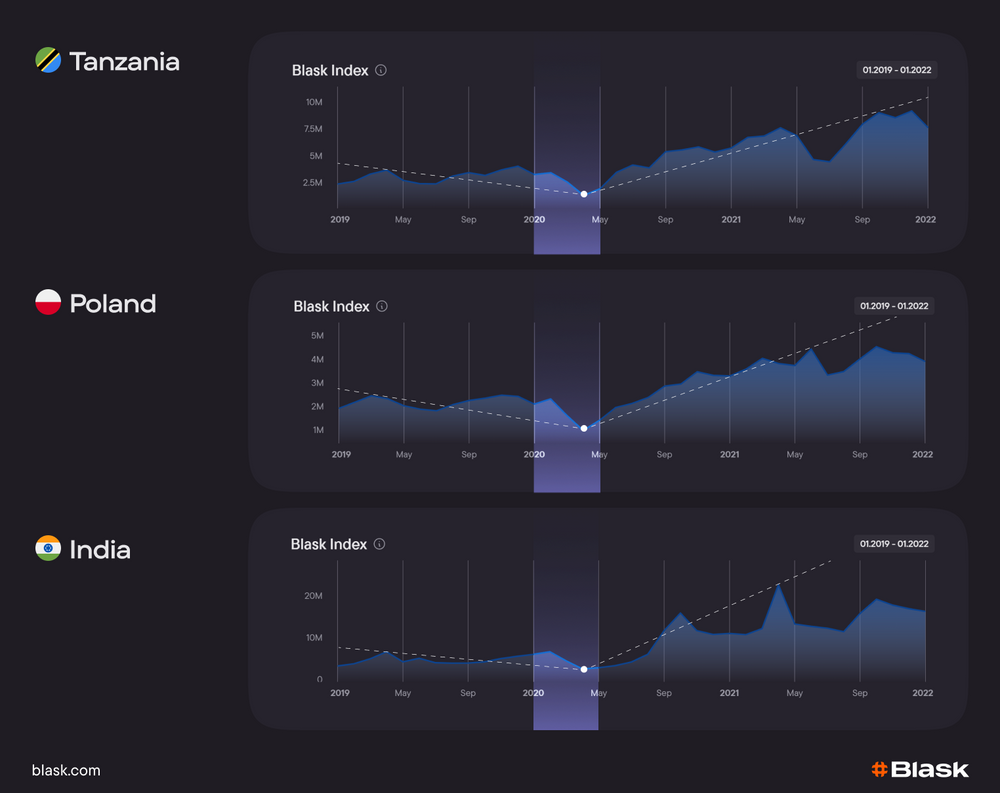
A data-driven strategy for long-term success
Creating a market-ready iGaming strategy is not a one-size-fits-all endeavor. By leveraging market insights, competitor benchmarking, and expansion opportunities, operators can build a tailored approach that maximizes growth and player satisfaction.
Setting clear KPIs and measuring performance against them ensures that the strategy remains on track, while a well-defined conversion funnel provides a roadmap for optimizing the player journey.
By continually analyzing market trends, benchmarking against competitors, and expanding into new regions, operators can stay ahead of the curve, maximize revenue, and build long-term player loyalty.
The next step is to implement these insights, adapt to the ever-changing iGaming landscape, and ensure your strategy is as dynamic as the industry itself.
